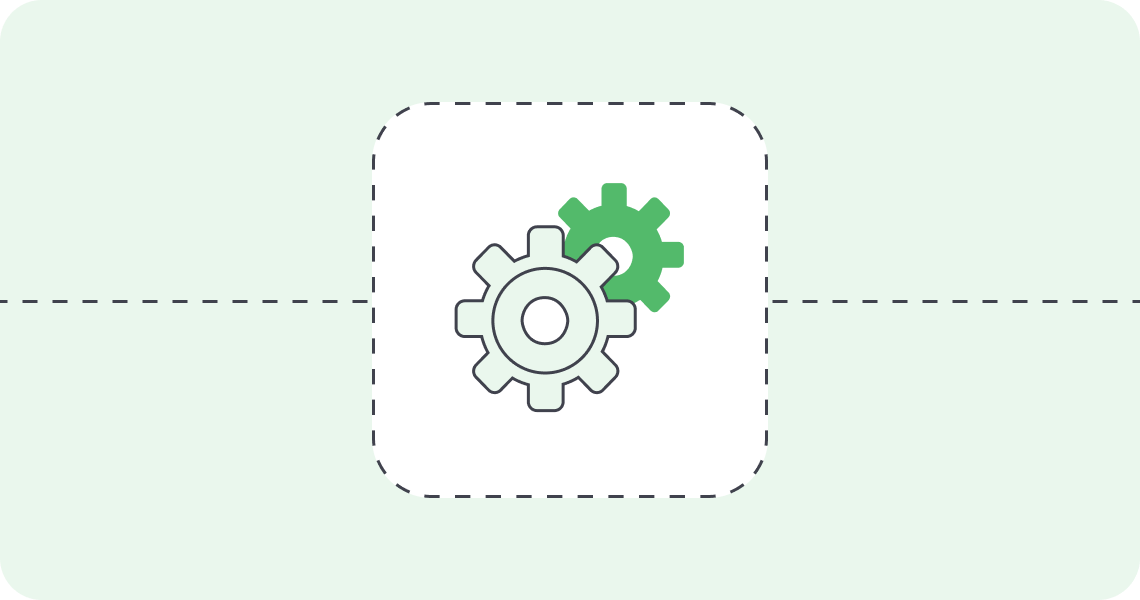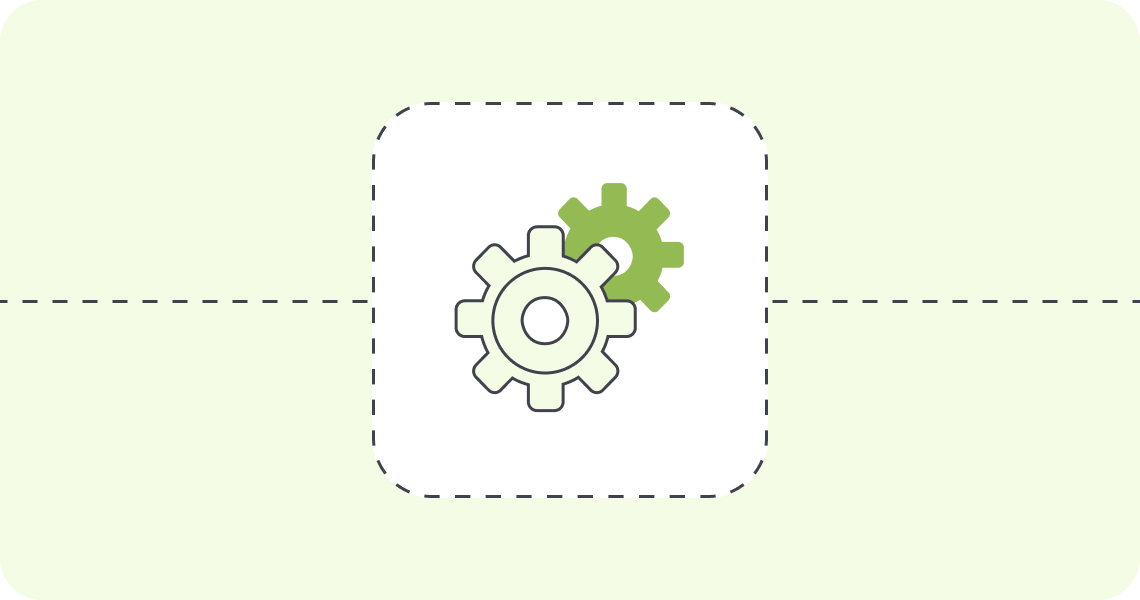In B2B tech marketing, making an impact with high-value accounts is key, right? And that’s where Account-Based Marketing (ABM) comes in. It means marketing moves from a one-size-fits-all approach to a tailored approach that targets the companies most likely to become big partners through account based advertising. It’s a better way to market, aligning sales and marketing teams to target, engage and win the accounts that matter.
Want to see how you can get the most out of ABM? Keep reading as we walk you through the 7 steps to build and implement an ABM strategy.
What is an Account-Based Marketing (ABM) Strategy?
Historically B2B marketing strategies have been broad brush campaigns that throw as much lead generation as possible at the wall and hope a certain percentage will stick. This can be resource heavy and inefficient when the conversion rates are low.
ABM does the opposite. By identifying and targeting high-value accounts from the start, companies can make sure their marketing and sales resources are focused where they will get the best results. This is done by building and implementing an account based marketing strategy that brings sales and marketing teams together to create personalized content and align on goals and messaging.
ABM ROI
The nuanced approach of ABM, with its focus on pre-qualified prospects, generates more revenue than traditional marketing by a long way. Choosing the right account based marketing strategies for the right decision makers and their preferences is key to getting engagement and conversion rates.
ROI Through Strategic Focus
ABM differs by focusing resources on a select group of key accounts, identified through a detailed process of data analysis, market research and close collaboration between marketing and sales teams. This strategic focus means every marketing activity, from personalized email campaigns to custom content and targeted ads, is tailored to the needs, challenges and business goals of those accounts.
For example, a cybersecurity company. Instead of broad brush campaigns, they use ABM to target financial institutions – a sector where cybersecurity is top of mind. By crafting messages that speak directly to the security challenges faced by banks and financial services companies and showing they understand the regulatory requirements, they increase their chances of engaging those high-value prospects.
Shortening the Sales Cycle
ABM’s targeted approach often means a shorter sales cycle. Since the marketing is so aligned to the prospect’s needs, the time from first engagement to close is reduced. This is gold dust for B2B tech companies where sales cycles can take months or even years.
For example, a company that provides cloud storage solutions for the healthcare sector. Through ABM they can speak directly to the concerns of healthcare providers around data security, HIPAA compliance and scalability. By showing case studies or testimonials from similar clients they can build trust and move prospects through the sales funnel faster.
Getting More from Your Marketing Budget
In ABM since the marketing is so targeted, there’s less waste on leads that won’t convert. This precision targeting means the marketing budget is used more effectively and gets a higher ROI. By engaging with high value accounts meaningfully B2B tech companies can build long term relationships that result in repeat business and increased lifetime value.
ABM Strategy Components
Building an ABM marketing strategy is key to B2B tech enterprise marketing strategy that wants to connect with their best prospects. Here’s a more detailed look at how to build an ABM strategy:
Get Buy-In and Roles
To make your ABM strategy work you need buy-in from all relevant stakeholders. This means aligning your sales and marketing teams to work towards the same goals. Clear communication between sales reps and marketers is key to engaging key decision makers and achieving shared goals and overall customer experience. Define the roles and responsibilities of each team member so there’s no confusion and everyone is on the same page.
1. Who is Your Ideal Client
Defining your ideal client is the first step in building an account-based marketing (ABM) strategy. This means identifying key characteristics, getting buy-in from stakeholders and defining roles and responsibilities.
Identify Key Characteristics
To define your ideal client start by identifying key characteristics that align to your business goals. Think industry, company size, job function and department. Understand the pain points and challenges your ideal clients face, what are their goals and objectives. Also their buying behaviour and decision making process so you can tailor your approach.
Use data and research to inform your ideal client profile. Firmographic data (company size, industry, location) provides the foundation. Technographic data (technology and software they use) provides insight into their environment. Behavioral data (buying behaviour and engagement patterns) helps you understand how they interact with your brand and make purchasing decisions.
2. Use The ABM Strategy Template
A well defined ABM strategy template is the starting point for your campaign. Start by stating your objectives. Are you looking to get into a new market segment or expand within existing accounts?
Select the high value accounts that align to these objectives, detail why each account is a good fit for your offerings. Create personalized messaging that speaks to the challenges and opportunities of each account. Choose the best channels to engage with, where will these accounts interact with your ABM content.
Finally define your success metrics upfront — engagement rates, lead quality, deal closure rates and account growth metrics.
3. Growth ABM vs Enterprise ABM
Knowing the difference between Growth ABM and Enterprise ABM allows you to tailor your approach to the size and complexity of the accounts you’re targeting. Growth ABM is agile, focused on mid-market accounts with growth potential. This requires rapid iteration and flexibility to keep up with the evolving needs of these emerging players.
Enterprise ABM is a more comprehensive approach to engaging large established accounts with multiple needs and decision making structures. It involves more customization and a long term view, anticipating and addressing the broader business outcomes and strategic goals of these accounts. Choose between these approaches based on your overall business objectives and the characteristics of your target accounts.
4. Segment Your High Value Accounts
Segmentation is grouping your target accounts into meaningful groups that share common characteristics, industry verticals, company size or specific technological needs. Segmentation allows for a more focused and personalized marketing approach. You can tailor your messaging and solutions to each segment’s challenges or aspirations.
Using data analytics tools and CRM insights can reveal patterns and opportunities for segmentation that you might not have thought of, so you can target and personalize even more.
5. Align Sales and Marketing Teams
Alignment between marketing and sales teams is key in ABM. Both teams should have a shared understanding of the ABM strategy, the target accounts and the account selection criteria. This alignment means marketing efforts are directly supporting sales objectives, creating a seamless journey for the target accounts from first engagement to conversion and beyond. Regular meetings and strategy sessions between the teams will keep this alignment in check and allow for real time adjustments based on feedback from sales interactions and market changes.
Get Buy-In and Define Roles
Once you have your ideal client defined, you need to get buy-in from stakeholders, including sales and marketing teams. Communicate the value of account based marketing and how it aligns to overall business objectives. This will mean everyone understands the importance of the ABM strategy and is committed to making it work.
Define clear roles and responsibilities for each team involved in the ABM process. Define key performance indicators (KPIs) and metrics for success to measure the effectiveness of your efforts. Ensure both sales and marketing teams are aligned and working towards the same goals, with a clear understanding of their roles in the ABM process. Regular communication and collaboration between teams will keep this alignment in check and drive your ABM strategy.
6. Build a Team with Diverse Skills
Building a team with diverse skills is key to your ABM strategy. This means bringing together people with expertise in content creation, data analysis, sales and marketing alignment and technology and automation.
7. Reach the Right Person With the Right Message
Reaching the right person with the right message is about understanding the unique context of each target account and target companies and crafting communications that speak directly to their situation. It’s also about choosing the right channels for your message, whether direct outreach, personalized digital content, social media engagement or targeted events.
Create Targeted Content and Messaging
Now you have your ideal client defined and your team assembled, it’s time to create targeted content and messaging that speaks to your target accounts. Develop personalized content that speaks directly to the needs and pain points of your ideal client. Craft messaging that aligns to your business objectives so it’s relevant and compelling.
Use data and insights to inform your content and messaging strategy. Tailor your content to each stage of the sales process, from awareness to conversion, so it addresses the specific needs and challenges of your target accounts. Deliver this content through the channels and platforms your target accounts use most, whether email, social media or targeted events.
By building a team with diverse skills and creating targeted content and messaging you can engage your target accounts and drive your ABM strategy. This means your marketing efforts are focused, personalized and aligned to the needs of your high value accounts, resulting in better engagement and higher conversion rates.
8. Measure Your Results
Measurement is key to understanding the impact of your ABM. Define clear KPIs based on the initial objectives of your ABM strategy. These could be metrics around engagement (email open rates, event attendance, website interactions), conversion (lead conversion rates, number of opportunities created) and revenue impact (account growth, deal size, sales cycle length). Measure these regularly to see how your strategy is working and where you need to improve.
9. Improve Your ABM
Improvement is key to ABM. Use the insights from your measurement to refine your targeting, messaging and engagement strategy. This could mean adjusting to specific accounts, trying new communication channels or reviewing your account selection criteria. The aim is to create a culture of agility and learning within your ABM programme so you can adapt to market or within target accounts and continually improve your ABM.
How to Build a B2B ABM Strategy
ABM Strategy for SaaS Companies
For SaaS ABM strategy the focus should be on identifying and engaging accounts whose growth trajectories and strategic initiatives align to your SaaS solution.
- Identify High Value Accounts Start by identifying companies that will get the most value from your services. These could be companies in growth phase, companies entering new markets or companies undergoing digital transformation.
- Understand Their Tech Ecosystem Dive deep into the current tech stack of these targeted accounts. The goal is to understand how your SaaS solution can fit in, provide value without disrupting existing workflows.
- Customize Your Message Tailor your messaging to show how your solution addresses their unique pain points, enhances operational efficiency or drives revenue growth. Highlight case studies or testimonials from similar companies to provide concrete evidence of your solution’s impact.
- Use Data for Personalization Use data analytics to personalize your outreach further. Understanding user behavior within these accounts can help you fine tune your messaging to make it more relevant and engaging.
- Continuously Engage and Educate Beyond initial contact establish a strategy for ongoing engagement. Offer value through educational content, webinars and workshops that help potential clients understand the evolving landscape and how your SaaS solution positions them for success.
ABM Strategy Examples for Retail in B2B Tech
Retail companies with their unique operational complexities and customer experience challenges require a tailored approach to ABM. The focus should be on how your technology solves their immediate problems and aligns to their long term strategic goals.
- Operational Efficiency Start by showing how your solution can simplify complex retail operations from inventory management to omnichannel sales platforms. Operational efficiency resonates strongly with retail companies looking to reduce costs and improve margins.
- Enhance Customer Experience Show how your technology can improve the end customer experience, a key retail metric. Whether it’s through personalized shopping experiences, improved customer service interfaces or faster checkout processes tie your solution to improved customer satisfaction and loyalty.
- Drive Sales and Revenue Demonstrate clear paths through which your technology can contribute to top line growth. This could be through better data analytics for targeted marketing campaigns, e-commerce platforms or tools that enable cross-selling and upselling.
- Address Industry Specific Challenges Understand and address the unique challenges the retail sector faces, such as seasonal demand fluctuations, supply chain disruptions or changing consumer behavior trends. Tailor your ABM campaigns to show empathy and deep understanding of these challenges and position your technology as the solution.
- Continuous Adaptation and Support Finally show how your technology adapts and supports the rapidly changing retail landscape. Retail companies value partners who become their strategic partners in navigating change.
Top Account-Based Marketing Tools
CRM Platforms: The Foundation of ABM
HubSpot: A multi-purpose CRM platform, HubSpot stands out for its deep connectability across marketing, sales and service hubs. It gives you a single view of your target accounts and allows personalized engagement at every stage of the customer journey. Its ease of use and comprehensive analytics makes it a favorite among B2B tech companies.
See our guide to building Account-Based Marketing on Hubspot with our custom, cost effective approach.
Salesforce: For larger enterprises with complex ABM requirements Salesforce CRM is the way to go. It provides deep insights into account activity, preferences and interactions so you can plan accounts and market to them personally.
Marketing Automation Tools: Amplify Engagement
Marketo: A marketing automation leader, Marketo is great at creating, managing and executing personalized engagement strategies at scale. Email marketing, lead management and account-based marketing all powered by analytics to optimize campaign performance.
Pardot: Integrated with Salesforce CRM, Pardot is a marketing automation solution for B2B marketing. It offers custom email marketing, lead scoring and nurturing tools to accelerate the pipeline and drive sales for high value accounts.
Targeted Advertising Platforms: Where Accounts Are
LinkedIn Marketing Solutions: LinkedIn’s professional network is unmatched. LinkedIn is the platform for targeted advertising. You can target by job role, industry, company size and more so it’s perfect for reaching decision makers within your target accounts.
Demandbase: ABM focused, Demandbase has a full suite of advertising and website personalization tools to tailor your online presence and advertising to each target account. Its platform uses AI to optimize account engagement and conversion rates.
Analytics and Account Insights: Measure Success
Google Analytics: A must have for tracking website engagement and behavior, Google Analytics gives you insights into how target accounts are interacting with your site. Custom segments and goals can be set up to track ABM campaign performance and account engagement.
6sense: This account engagement platform uses AI to give you insights into buyer intent and account behavior. 6sense helps you know where target accounts are in the buying journey so you can engage at the right time.
Data and Lead Management: Quality Interactions
ZoomInfo: With a massive database of company and contact information, ZoomInfo helps you find and reach decision makers within your target accounts. Its data intelligence helps refine your account selection and personalize your outreach.
Leadfeeder: By identifying companies that visit your website, Leadfeeder gives you insights into target accounts that are interested in your solutions. It integrates with CRMs to enrich account data and trigger follow up actions.
Each of these tools is a critical part of the ABM process from account identification to personalized engagement, conversion and measuring success. By using these tools in your ABM arsenal B2B tech companies can have a more coordinated, efficient and effective approach to account-based marketing and get higher ROI and deeper relationships with high value accounts.
At 42DM we supercharge ABM & ABX for B2B tech companies with a set of tools.
Our approach ensures your marketing hits the mark every time. Here’s how we do it:
42DM ABM Tools
Bombora: This tool tells us which companies are looking into products or services like yours. It’s like having a buyer radar so we can target the right accounts at the right time.
Triblio: With Triblio we get even more granular, finding which people within those companies are interested. This allows us to personalize our messages to the max, to 175 million profiles worldwide.
G2: This platform is all about who’s ready to buy. G2 gives us insights into buyers actively searching in your product category so we can connect with them precisely.
Wherever Your Audience Is
We use Influ2, a tool that allows us to target ads to specific people within companies so your message gets seen by the right eyes. Our reach extends to Google Ads, Facebook, LinkedIn and more with a database of 1.5 billion B2B profiles. So wherever your customers are online we can reach them.
Tuning for Optimum Performance
With metadata.io we can fine tune our campaigns in real-time. This tool allows us to adjust our strategies based on their performance so your marketing is as efficient as possible.
Contact 42DM for ABM.
Our tech and expertise makes ABM work for B2B tech companies. Ready to target and engage high value accounts better? Get in touch today and we’ll get your ABM up and running in 30 days!








